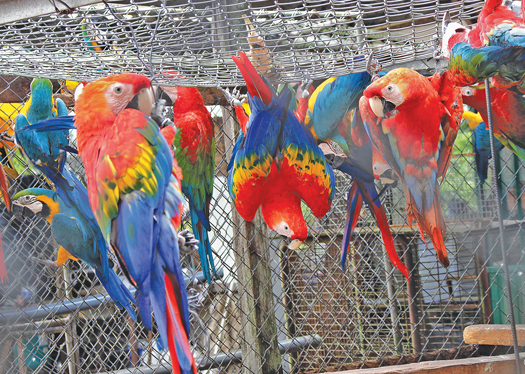
Wild-caught macaws near Paramaribo, Suriname. (Photo by Arturo Hortas/TRAFFIC)
Parrots packed in plastic tubes in carry-on luggage, dozens of hummingbirds preserved in salt—even eggs taped to a traveler’s body for warmth. Bird smugglers have used multiple tricks to spirit millions of colorful specimens out of South America over the past century or more. Many of the birds wound up in the United States or Europe, caged as pets or providing feathers for fashion trim. Meanwhile, the trade’s effects rippled through forests, pushing some species to the brink of extinction. In the 1960s and 1970s, spurred by the Convention on International Trade in Endangered Species of Wild Fauna and Flora (Cites), South American countries began to pass laws to limit or prohibit the export of birds caught in the wild. Since then, illegal trafficking in birds has dropped to its lowest level ever, according to a study of bird trafficking in South America, which was released in January... [Log in to read more]